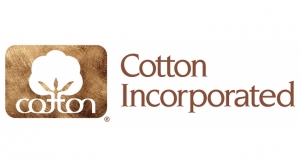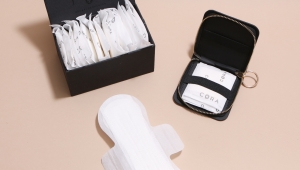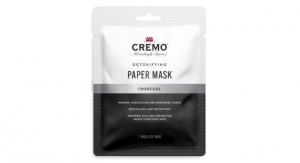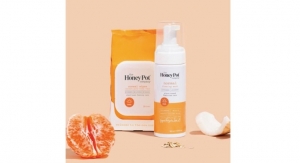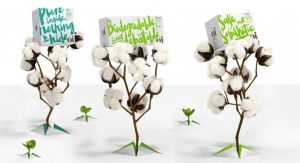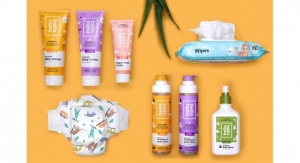Jane Wishneff, Executive Director, BAHP06.05.19
Consumer demands are making an unprecedented impact on policy trends for the baby and femcare markets in North America, which is affecting how the industry is making and marketing products. And in early 2019 alone, four states have introduced bills that call for more transparency on product labels for feminine hygiene products.
With this increased call for transparency, as well as “natural” and “organic” products, it is more important than ever that messaging regarding these products, whether it be to consumers or to policymakers at the state and federal levels, is based on sound science.
As the trade association representing the personal absorbent hygiene producers and service providers in the U.S., it is the Center for Baby and Adult Hygiene’s (BAHP) mission to support the safety, sustainability and integrity of these products. We do this through consumer education, fostering relationships with regulatory agencies and representatives within the value chain and advocating on public policy.
Most recently, I shared insight about the latest policy trends impacting the industry, and more specifically, how those trends are affecting the overall market for disposable diapers and feminine hygiene products during a presentation at CIDPEX2019 FOCUS Tissue & Hygiene Conference in Wuhan, Hubei, China. Here are a few of the thoughts I shared during the presentation:
What Are Consumers Asking For?
The American consumer wants information to make better informed choices on products they are purchasing – especially when it comes to those used on our bodies or come into contact with children. When we think about the absorbent hygiene industry, this desire from consumers translates into having more transparency regarding the materials or chemicals used to manufacture a certain product.
The issue of transparency has garnered attention from both state and federal policymakers in the U.S., and policymakers are responding to these demands by seeking ways to mandate greater disclosure of the ingredients found in products. For example, chemically formulated homecare products such as cleaning products and air fresheners are already required to provide more information about the ingredients in their products in both California and New York. The industry avoided mandatory disclosure requirements until around 2016 through the development of voluntary initiatives and by engaging in transparent and honest dialogue with policymakers and the NGO community.
We are also entrenched in a society that generally thinks “natural” or “organic” is better without knowing what either of those terms really means. And that misinformation is being pushed out to consumers.
Impending Policy Trends
So how are these demands and desires from consumers affecting the regulatory environment in North America?
While we have seen federal legislation introduced during recent Congressional sessions, of more concern is the increased focus by state governments. With challenges we face in Washington, D.C., the strategy by consumer advocacy groups is to push legislation through at the state levels where the process is significantly easier without the bureaucracy and red tape.
Since the beginning of 2019, four states have introduced bills that would require manufacturers of feminine hygiene products to list ingredients found in their products on the package. The specifics of each of these bills differs, depending on state. New Jersey, New York and Pennsylvania all would require the listing of ingredients found on the products with composition levels. A bill introduced in Virginia identified specific ingredients that, if present in a product, would have to be listed on the label. There is also a bill in New York that would require disclosure of ingredients found in baby diapers on the product packaging.
The U.S. does not have a legal requirement for either feminine hygiene products or diapers to list product ingredients on the package in any form, or for the government to know what the ingredients are prior to it coming into commerce. Nonetheless, many manufacturers have chosen to disclose the ingredients in their products in a way that conforms with corporate or brand philosophy.
In an age where retailers serve as quasi-regulators, a handful of big box stores in the U.S. have also shown an interest in and are demanding more disclosure of ingredients in consumer products. For example, Target provides premier shelf space to product manufacturers that provide transparency into the ingredients in their products. Walmart requires manufacturers of certain consumer products to share all ingredients (including composition levels) with a third party, so ingredients can be assessed to some standard they have developed that equates to “safety” in their minds. Generally, they are looking at many European Union restrictions on ingredients as guidance.
From the retailer side, more transparent often translates into “safer,” and they are marketing to that effect.
So Why Does All this Matter?
Despite the lack of mandates for change from either the federal or state governments, why would we as industry care? Why not wait until we are required to change the way we manufacture or label products, or just continue to find “safer” ingredients or packaging that produce less waste? Innovation is not foreign to our industry. Responsible companies operate this way.
But we are seeing bigger changes. We are seeing industry change the way they manufacture and label products. Some of the largest manufacturers of tampons, pads and wipes have begun disclosing ingredients they use to manufacture their products. The benefit for them, because there is no mandate to do so, is that they can create a program that makes the most sense for their business model and their consumer base.
For instance, some companies are putting ingredient information, or ingredient claims, on product packaging. Other companies put this information on their company or brand websites, enabling them to package the information in a way that is more comprehensive than just doing so on a product label. There are also U.S. industry-led initiatives such as SmartLabel, an app-based program where consumers can scan a UPC code while they are at a store and immediately get ingredient and other safety information on a product.
BAHP’s Ongoing Efforts
With many of these trends at the forefront, BAHP is continually monitoring the latest developments. We are committed to providing accurate and useful information regarding the safe ingredients used to manufacture both feminine hygiene products and disposable diapers.
For more information on feminine hygiene, visit www.femcareanswers.com. For more information on disposable diapers, visit www.diaperanswers.org.
With this increased call for transparency, as well as “natural” and “organic” products, it is more important than ever that messaging regarding these products, whether it be to consumers or to policymakers at the state and federal levels, is based on sound science.
As the trade association representing the personal absorbent hygiene producers and service providers in the U.S., it is the Center for Baby and Adult Hygiene’s (BAHP) mission to support the safety, sustainability and integrity of these products. We do this through consumer education, fostering relationships with regulatory agencies and representatives within the value chain and advocating on public policy.
Most recently, I shared insight about the latest policy trends impacting the industry, and more specifically, how those trends are affecting the overall market for disposable diapers and feminine hygiene products during a presentation at CIDPEX2019 FOCUS Tissue & Hygiene Conference in Wuhan, Hubei, China. Here are a few of the thoughts I shared during the presentation:
What Are Consumers Asking For?
The American consumer wants information to make better informed choices on products they are purchasing – especially when it comes to those used on our bodies or come into contact with children. When we think about the absorbent hygiene industry, this desire from consumers translates into having more transparency regarding the materials or chemicals used to manufacture a certain product.
The issue of transparency has garnered attention from both state and federal policymakers in the U.S., and policymakers are responding to these demands by seeking ways to mandate greater disclosure of the ingredients found in products. For example, chemically formulated homecare products such as cleaning products and air fresheners are already required to provide more information about the ingredients in their products in both California and New York. The industry avoided mandatory disclosure requirements until around 2016 through the development of voluntary initiatives and by engaging in transparent and honest dialogue with policymakers and the NGO community.
We are also entrenched in a society that generally thinks “natural” or “organic” is better without knowing what either of those terms really means. And that misinformation is being pushed out to consumers.
Impending Policy Trends
So how are these demands and desires from consumers affecting the regulatory environment in North America?
While we have seen federal legislation introduced during recent Congressional sessions, of more concern is the increased focus by state governments. With challenges we face in Washington, D.C., the strategy by consumer advocacy groups is to push legislation through at the state levels where the process is significantly easier without the bureaucracy and red tape.
Since the beginning of 2019, four states have introduced bills that would require manufacturers of feminine hygiene products to list ingredients found in their products on the package. The specifics of each of these bills differs, depending on state. New Jersey, New York and Pennsylvania all would require the listing of ingredients found on the products with composition levels. A bill introduced in Virginia identified specific ingredients that, if present in a product, would have to be listed on the label. There is also a bill in New York that would require disclosure of ingredients found in baby diapers on the product packaging.
The U.S. does not have a legal requirement for either feminine hygiene products or diapers to list product ingredients on the package in any form, or for the government to know what the ingredients are prior to it coming into commerce. Nonetheless, many manufacturers have chosen to disclose the ingredients in their products in a way that conforms with corporate or brand philosophy.
In an age where retailers serve as quasi-regulators, a handful of big box stores in the U.S. have also shown an interest in and are demanding more disclosure of ingredients in consumer products. For example, Target provides premier shelf space to product manufacturers that provide transparency into the ingredients in their products. Walmart requires manufacturers of certain consumer products to share all ingredients (including composition levels) with a third party, so ingredients can be assessed to some standard they have developed that equates to “safety” in their minds. Generally, they are looking at many European Union restrictions on ingredients as guidance.
From the retailer side, more transparent often translates into “safer,” and they are marketing to that effect.
So Why Does All this Matter?
Despite the lack of mandates for change from either the federal or state governments, why would we as industry care? Why not wait until we are required to change the way we manufacture or label products, or just continue to find “safer” ingredients or packaging that produce less waste? Innovation is not foreign to our industry. Responsible companies operate this way.
But we are seeing bigger changes. We are seeing industry change the way they manufacture and label products. Some of the largest manufacturers of tampons, pads and wipes have begun disclosing ingredients they use to manufacture their products. The benefit for them, because there is no mandate to do so, is that they can create a program that makes the most sense for their business model and their consumer base.
For instance, some companies are putting ingredient information, or ingredient claims, on product packaging. Other companies put this information on their company or brand websites, enabling them to package the information in a way that is more comprehensive than just doing so on a product label. There are also U.S. industry-led initiatives such as SmartLabel, an app-based program where consumers can scan a UPC code while they are at a store and immediately get ingredient and other safety information on a product.
BAHP’s Ongoing Efforts
With many of these trends at the forefront, BAHP is continually monitoring the latest developments. We are committed to providing accurate and useful information regarding the safe ingredients used to manufacture both feminine hygiene products and disposable diapers.
For more information on feminine hygiene, visit www.femcareanswers.com. For more information on disposable diapers, visit www.diaperanswers.org.

